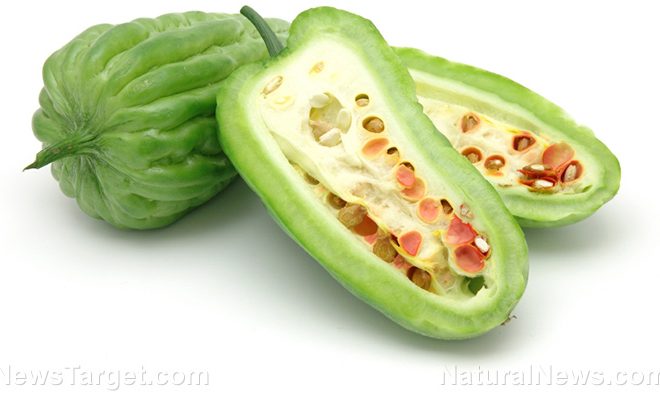Researchers identify compound in bitter melon that can lower blood sugar effectively

(Natural News) Momordica charantia, or bitter melon, is a tropical vine whose fruit is commonly used in Asian cuisine. Despite its strong, bitter taste, many people still choose to eat this unusual vegetable because of its many health benefits. One of the best-known properties of bitter melon is its ability to lower blood sugar levels. This has been demonstrated in numerous studies and has led to bitter melon extracts being used as dietary supplements, especially by diabetics.
In a recent study, researchers from France and Congo investigated the active components of bitter melon grown in Congo and evaluated the antidiabetic properties of its ethanol extract. Their aim is to confirm the presence of a compound called charantine, which has been identified as the main anti-diabetic component of bitter melon. The researchers reported their findings in an article published in the Journal of Medicinal Plants Research.
Locally grown bitter melon in Congo contains anti-diabetic charantine
Bitter melon belongs to the gourd (Cucurbitaceae) family and is closely related to common garden fruits like cucumber, pumpkin, squash and zucchini. It is widely grown in tropical regions in Africa and is also used as a vegetable as well as a natural medicine. In Congo, bitter melon is known as a traditional treatment for diabetes and is also used a remedy for various ailments, such as constipation, malaria and parasitic worm infections.
However, despite the widespread use of locally grown bitter melon as folk medicine, no studies have been done to analyze its chemical and biological properties. To address this, the researchers decided to conduct several experiments using ethanol extracts derived from the leaves of bitter melon. According to literature, bitter melons from China and India are rich in bioactive components, such as alkaloids, cardiac glycosides, flavonoids, plant steroids, saponins and tannins.
Phytochemical studies of bitter melon extracts eventually led to the identification of various compounds, such as momordicosides, momordenol, momordicin, cucurbitacin and charantine. Among these, charantine is the only compound that has been reported to exert anti-diabetic effects. Charantine can be isolated from the seeds, fruits and leaves of the bitter melon plant.
For their experiment, the researchers analyzed the ethanol extract of locally grown bitter melon using gas chromatography and mass spectrometry. They confirmed the presence of charantine in the extract. To test its anti-diabetic activities, the researchers treated rats with streptozotocin-induced diabetes with the bitter melon extract. They reported that the extract reduced blood sugar levels in the diabetic mice by 51.62 percent after three hours.
Based on these findings, the researchers concluded that the presence of anti-diabetic charantine in bitter melon growing in Congo justifies its use in Traditional Congolese Medicine.









